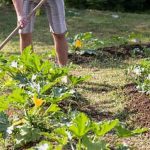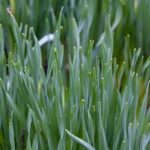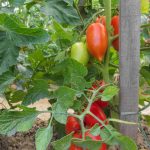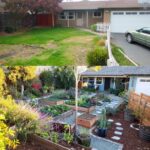Are you interested in starting a vegetable garden but don’t have a lot of outdoor space? Consider vegetable seeds container gardening. This method allows you to grow a variety of delicious vegetables in containers, making it perfect for small spaces such as balconies, patios, and even windowsills. In this article, we will cover everything you need to know about getting started with vegetable seeds container gardening, from selecting the right containers to harvesting the fruits of your labor.
When it comes to vegetable seeds container gardening, selecting the right containers is crucial. The type and size of the containers will directly impact the growth and success of your plants. Additionally, choosing the best vegetable seeds for container gardening plays a significant role in determining the type and quantity of produce you can grow. With proper preparation, planting, and maintenance, you can enjoy a bountiful harvest of fresh vegetables right from your own home.
In addition to practical tips for growing vegetables in containers, we will also explore innovative ideas for creative displays that will enhance the aesthetic appeal of your indoor or outdoor space. Whether you’re a beginner or an experienced gardener looking to try something new, vegetable seeds container gardening offers numerous benefits and rewards that are sure to delight both your palate and your senses.
So let’s dive into the world of container gardening and start enjoying all the perks it has to offer.
Selecting the Right Container for Vegetable Seeds
When it comes to container gardening, choosing the right container for your vegetable seeds is crucial for their success and growth. Here are some tips on selecting the right container for your vegetable seeds:
1. Size: The size of your container will depend on the type of vegetable you want to plant. Larger vegetables like tomatoes and peppers will need a deeper and wider container, while smaller vegetables like lettuce and herbs can thrive in smaller containers.
2. Drainage: Proper drainage is essential for healthy plant growth. Make sure your containers have holes at the bottom to allow excess water to drain out. You can also consider adding a layer of rocks or pebbles at the bottom of the container to improve drainage.
3. Material: Containers come in a variety of materials such as plastic, ceramic, terracotta, or fabric. Each material has its own pros and cons, so choose one that suits your gardening needs and style.
4. Mobility: If you plan to move your containers around to follow the sun or protect them from harsh weather, consider choosing containers with wheels or handles for easy mobility.
By considering these factors when selecting the right container for your vegetable seeds, you can ensure that they have the best possible environment for growth and development in your container garden.
Remember that each type of vegetable seed may have different requirements regarding containers, so be sure to research specific recommendations for each vegetable you plan on planting in your container garden. With proper planning and consideration, you can set up a successful and productive vegetable seeds container gardening display that will yield delicious fruits and veggies throughout the growing season.
Choosing the Best Vegetable Seeds for Container Gardening
When it comes to vegetable seeds container gardening, the key to a successful and fruitful garden begins with choosing the right seeds. Not all vegetable varieties are well-suited for container gardening, so it’s important to select seeds that are specifically recommended for this type of cultivation.
One of the primary considerations when choosing vegetable seeds for container gardening is the size of the mature plant. Since containers have limited space, it’s best to choose compact or dwarf varieties of vegetables that won’t overcrowd the container as they grow. Examples of vegetables that thrive in containers include cherry tomatoes, bush beans, peppers, lettuce, and carrots.
In addition to size, it’s also important to consider the climate and seasonal requirements of the vegetable seeds you choose. Some vegetables may be better suited for cooler climates, while others thrive in warm weather. Be sure to select seeds that are suitable for your specific growing conditions to ensure a successful harvest.
When shopping for vegetable seeds for container gardening, consider varieties that are known for their adaptability to confined spaces and their ability to produce high yields in containers. Look for seeds labeled as “suitable for small spaces” or “ideal for patio gardens” to find the best options for your container garden. By selecting the right vegetable seeds for your container garden, you can set yourself up for a bountiful harvest and a successful gardening experience.
Preparing the Soil for Planting Vegetable Seeds
When it comes to preparing the soil for planting vegetable seeds in containers, it’s essential to create a suitable environment for your plants to thrive. Here are some key steps to ensure the success of your container garden:
1. Choose the right soil: Select a high-quality potting mix specifically formulated for container gardening. This type of soil provides excellent drainage and aeration, which is crucial for healthy root development. Avoid using regular garden soil, as it tends to become compacted in containers and may not provide the necessary nutrients for your vegetable seeds.
2. Add organic matter: Enhance the potting mix by incorporating organic matter such as compost or well-rotted manure. This addition will enrich the soil with essential nutrients and improve its overall structure, promoting optimal growth for your vegetable seeds.
3. Consider fertilizer: Depending on the specific needs of the vegetables you’re growing, you may need to supplement the soil with a balanced fertilizer before planting your seeds. Look for a fertilizer formulation tailored to container gardening and follow the application instructions carefully to avoid overfeeding your plants.
By taking these steps to prepare the soil for planting vegetable seeds in containers, you can create an ideal growing environment that sets the stage for a bountiful harvest. Remember that healthy soil is the foundation of successful container gardening, so invest time and effort into this crucial aspect of your gardening journey.
Planting and Watering Vegetable Seeds in Containers
Once you have selected the containers for your vegetable seeds, it’s time to prepare the soil. Use a high-quality potting mix that is rich in organic matter and drains well. This will provide a healthy growing environment for your vegetable plants. When planting the seeds, follow the instructions on the seed packet regarding spacing and depth. After planting, water the containers thoroughly but gently to avoid disturbing the seeds.
It’s important to monitor the moisture levels of the soil in your containers regularly. Depending on factors such as weather conditions and plant size, you may need to water your vegetable seeds daily or every few days. Use a watering can or hose with a gentle spray attachment to ensure even moisture distribution.
Be mindful not to overwater, as this can also cause issues such as fungal diseases or root rot. As your vegetable plants grow, adjust your watering routine accordingly to support their changing needs.
| Planting and Watering | Vegetable Seeds in Containers |
|---|---|
| Choose containers with proper drainage | Use a high-quality potting mix |
| Follow seed packet instructions for planting | Water thoroughly but gently after planting |
| Avoid overwatering and monitor moisture levels regularly | Adjust watering routine as plants grow |
Providing Proper Sunlight and Maintenance for Container Gardening
After you have selected the right container and planted your vegetable seeds, it is crucial to provide proper sunlight and maintenance for your container garden. Proper sunlight is essential for the healthy growth of your vegetables, and regular maintenance will ensure that your container garden thrives throughout the growing season.
Sunlight Requirements
Different vegetables have varying sunlight requirements. Some vegetables, such as tomatoes and peppers, require at least 6-8 hours of direct sunlight per day. On the other hand, leafy greens like lettuce and spinach can thrive in partially shaded areas.
It is important to place your containers in an area that receives the appropriate amount of sunlight based on the specific needs of the vegetables you are growing. Consider using a wheeled plant caddy or dolly to easily move your containers to follow the sun if necessary.
Watering and Fertilizing
Regular watering is crucial for container gardening as pots tend to dry out faster than traditional garden beds. Make sure to water your vegetable seeds containers regularly, especially during hot summer months. Additionally, fertilize your vegetable plants every 2-4 weeks with a balanced, water-soluble fertilizer to ensure they have access to essential nutrients.
Maintenance Tasks
Keep an eye on your plants for signs of pests or diseases and take necessary actions such as removing affected leaves or applying organic pest control methods when needed. Regularly check for overgrown roots and consider repotting larger plants into bigger containers if necessary. Pruning, staking, and trellising may also be required as your plants grow to support their weight and help them maintain an upright position.
By providing proper sunlight and regular maintenance, you can ensure that your vegetable seeds container garden flourishes and produces a bountiful harvest for you to enjoy.
Tips for Pests and Disease Management in Vegetable Seeds Container Gardening
When it comes to container gardening, managing pests and diseases is crucial to ensuring the success of your vegetable seeds. Because containers are in a more controlled environment, it can be easier to prevent and manage these issues compared to traditional gardening. Here are some tips for effectively managing pests and diseases in your vegetable seeds container garden.
Choose Resistant Varieties
One way to prevent pest and disease problems in your container garden is by selecting vegetable seed varieties that are known for their resistance. Look for seeds labeled as resistant to common pests and diseases in your area. This simple step can go a long way in preventing issues before they even arise.
Proper Watering and Air Circulation
Overwatering or poor air circulation can lead to conditions that are favorable for pests and diseases to thrive. Make sure you’re only watering when necessary, allowing the soil to dry out slightly between watering sessions. Additionally, ensure that your containers have adequate drainage holes and are not overcrowded, allowing proper air circulation around your plants.
Natural Pest Control Methods
Consider implementing natural pest control methods such as introducing beneficial insects like ladybugs or lacewings, using natural insecticidal soaps, or creating physical barriers like row covers to protect your plants from pests. These environmentally friendly approaches can help manage pest problems without harmful chemicals.
By implementing these tips for pest and disease management in your vegetable seeds container gardening, you’ll be better equipped to maintain a healthy and thriving garden throughout the growing season. Remember that proactive prevention and early intervention are key components of successful container gardening when it comes to managing these issues.
Harvesting and Enjoying the Fruits of Your Container Garden
Harvesting the fruits of your labor in container gardening is one of the most rewarding experiences for any gardener. Whether you are growing tomatoes, peppers, or herbs, seeing your plants thrive and produce a bountiful harvest is a fulfilling accomplishment. Here are some tips on how to harvest and enjoy the fruits of your container garden.
When it comes to harvesting vegetables from your container garden, timing is key. It’s important to wait until the vegetables are fully mature before picking them. This ensures that you will get the best flavor and texture from your produce. For example, tomatoes should be picked when they are fully ripe and have reached their full color. On the other hand, leafy greens like lettuce and spinach should be harvested when they are young and tender.
Once you have harvested your vegetables, it’s time to enjoy the fruits of your labor in the kitchen. There are countless delicious recipes that can be made using freshly picked vegetables from your container garden.
Whether it’s a simple salad with homegrown tomatoes and cucumbers or a flavorful stir-fry with freshly picked peppers and herbs, the possibilities are endless. Not only will you get to enjoy the flavors of your own homegrown produce, but you’ll also benefit from the nutritional value of freshly harvested vegetables.
In addition to enjoying the fruits of your container garden yourself, consider sharing your bounty with friends and family. Sharing the delicious produce from your garden can bring joy to others and strengthen community connections. It’s also a great way to inspire others to try their hand at vegetable seeds container gardening themselves.
Innovative Ideas for Creative Vegetable Seeds Container Gardening Displays
When it comes to container gardening, the options for creativity are endless. Creating a visually appealing display with vegetable seeds in containers not only adds beauty to your space but also maximizes the yield of your garden. One innovative idea for a creative display is using vertical gardening techniques.
Vertical gardens can be constructed using trellises, hanging planters, or wall-mounted containers to grow vegetable seeds such as tomatoes, cucumbers, and beans. This not only saves space but also adds an interesting visual element to your garden.
Another creative idea for vegetable seeds container gardening displays is using unconventional containers. Instead of traditional pots or planters, consider using items such as old tires, wheelbarrows, or even wooden crates as unique vessels for planting vegetable seeds. These unconventional containers add a touch of whimsy to your garden while also serving as functional growing spaces for your vegetables.
Additionally, incorporating edible flowers into your vegetable seeds container gardening display can add both color and flavor to your garden. Flowers such as nasturtiums, pansies, and calendula not only attract beneficial pollinators but also provide a pop of color that enhances the overall aesthetic of your container garden.
Overall, thinking outside the box and experimenting with different techniques and materials can lead to exciting and innovative displays for vegetable seeds container gardening. By combining practicality with creativity, you can create a visually stunning and productive container garden that provides an abundance of fresh produce.
| Idea | Benefit |
|---|---|
| Vertical gardening | Saves space and adds visual interest |
| Unconventional containers | Adds creativity and function to the garden |
| Incorporating edible flowers | Enhances aesthetic appeal and adds flavor |
Conclusion
Container gardening with vegetable seeds offers numerous benefits and rewards for gardeners of all levels. Not only does it provide a practical solution for individuals with limited space, but it also allows for greater control over soil quality and pests, resulting in healthier plants.
Additionally, the convenience of having fresh produce right at your fingertips is undeniable. The joy of watching your vegetable seeds grow and flourish in their containers is a rewarding experience that can bring a sense of satisfaction and accomplishment to any gardener.
One of the great advantages of vegetable seeds container gardening is the ability to experiment with different varieties and combinations without committing to a large plot of land. This opens up endless opportunities for creativity and innovation in designing unique displays that can serve both functional and decorative purposes.
Whether it’s arranging containers in a vertical garden or creating an herb and vegetable mix, there are countless ways to showcase the beauty and versatility of container gardening with vegetable seeds.
In conclusion, the benefits and rewards of vegetable seeds container gardening are plentiful. From its adaptability to various spaces, to the opportunity for personalized creativity, this form of gardening has something to offer everyone. Whether you’re an urban dweller craving fresh produce or a seasoned gardener looking for a new challenge, container gardening with vegetable seeds can be a fulfilling and enjoyable endeavor.
So why not give it a try? Start planning your own container garden today and reap the many benefits it has to offer.
Frequently Asked Questions
What Are the Best Vegetables for Container Gardening?
The best vegetables for container gardening are those that don’t require a lot of space to grow, such as tomatoes, peppers, lettuce, spinach, and radishes. These vegetables can thrive in the confined environment of a container with proper care.
What Vegetables Grow Well Together in a Container?
Some vegetables that grow well together in a container are tomatoes and basil, carrots and radishes, and lettuce and chives. These combinations not only maximize the use of space but also provide mutual benefits for each other’s growth.
What Seeds to Plant in Containers?
When it comes to planting seeds in containers, it’s important to choose varieties that are well-suited for small spaces. Good options include cherry tomatoes, mini bell peppers, baby carrots, dwarf beans, and various herbs like parsley, basil, and chives. These seeds will flourish in the limited area provided by a container garden.

If you’re looking to get into vegetable gardening, or are just looking for some tips on how to make your current garden better, then you’ve come to the right place! My name is Ethel and I have been gardening for years. In this blog, I’m going to share with you some of my best tips on how to create a successful vegetable garden.





